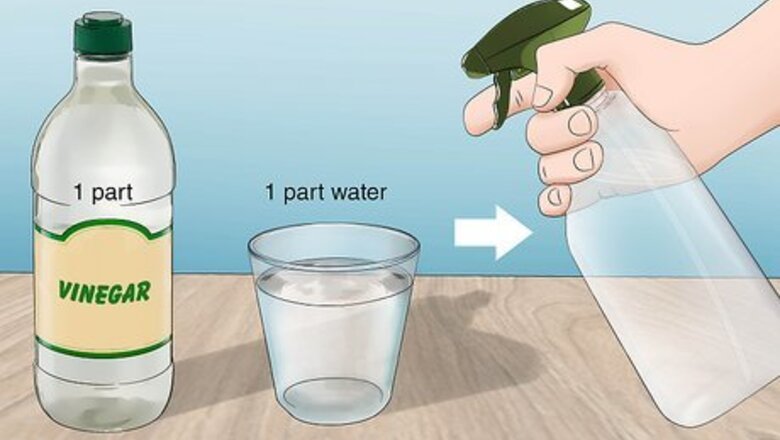
views
Vinegar and Water Repellent Spray
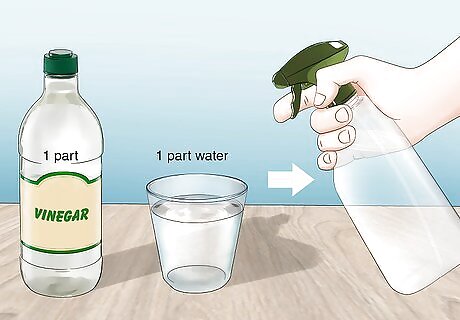
Combine equal parts vinegar and water in a plastic spray bottle. White distilled vinegar or apple cider vinegar both work equally well for repelling wasps without killing them. Spray bottles are inexpensive and can be found at any home improvement, convenience, or general merchandise store.
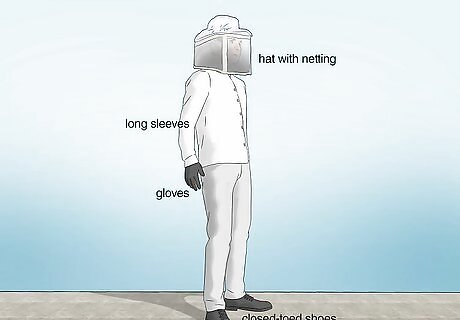
Wear protective clothing. It’s important to keep yourself safe from stings any time you’re dealing with wasps. They’re more aggressive than bees and will attack or swarm when they feel threatened. Wear long sleeves, gloves, closed-toed shoes, and a hat with netting to cover your face, neck, and shoulders. In the event of a swarm, cover your face and run to the nearest indoor shelter. Open and close the door as quickly as possible to prevent wasps from getting inside. Wasps and bees have different venom, and being allergic to one does not mean you’re allergic to the other. If you or someone in your home is allergic to wasps, contact a pest control professional to get rid of them for maximum safety.
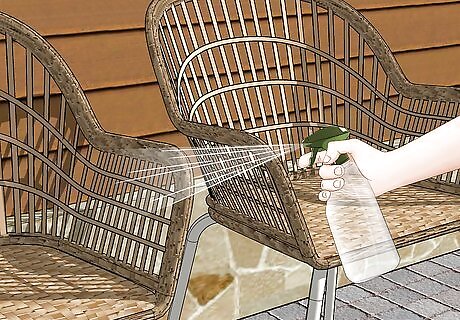
Spray the repellent around your frequently used outdoor living spaces. These might include patio furniture, garage doors, or play equipment. Spray around all entry points to your home to prevent wasps from sneaking in through the back screen door or a cracked window. The mixture will not kill the wasps, but the scent will drive them away from the area temporarily. Spray at dusk or at night when the wasps are least active to avoid stings and swarms.
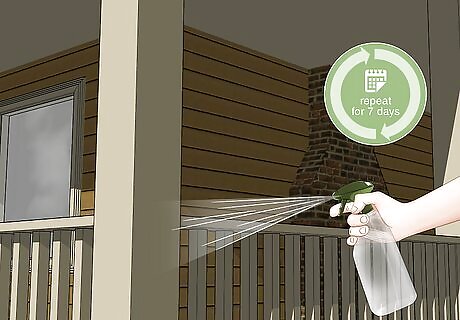
Re-spray the mixture frequently. This spray is a temporary fix and needs to be repeatedly reapplied to keep wasps away long term. Start by spraying daily for the first 7 days, and then frequently as needed. This mixture is not effective for nest removal. However, spraying often and early may help prevent a new nest from growing larger and more established. If you took down a wasp nest earlier in the season, you can also spray the area with vinegar and let it soak to prevent wasps from coming back. Don’t use the spray on an inhabited nest. You will only get a bunch of angry wasps.

Substitute vinegar and peppermint oil for a more potent spray. 1 tablespoon (15 mL) of peppermint oil mixed with 16 fluid ounces (470 mL) of vinegar (or a combination of vinegar and water) creates a stronger spray that is deadlier to wasps. Try this if the vinegar and water solution becomes less effective over time. Use this spray in the same locations with the same frequency as the vinegar and water mixture. Planting peppermint near your wasps’ favorite spots will also help drive them away. They hate the smell!
Vinegar Wasp Trap
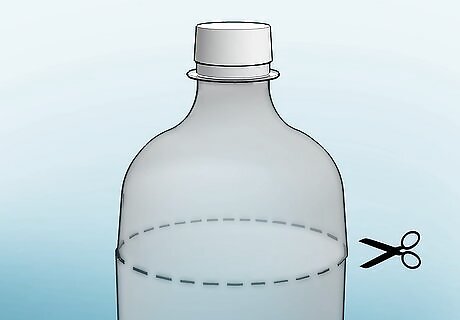
Cut the neck off of a 2-liter soda bottle. Use scissors to cut just underneath where the curve starts. The remaining part of the bottle should be a straight cylinder. You will use these pieces to assemble your trap.
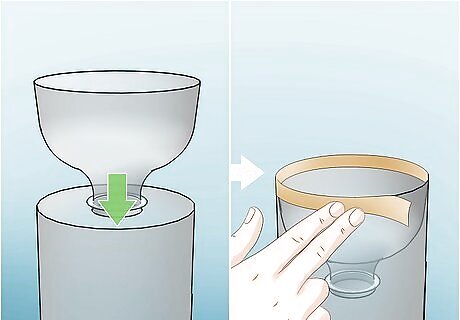
Tape the neck of the bottle upside down in the bottom of the bottle. The inverted neck will work like a makeshift funnel for your bait mixture (and the wasps’ entrance into the liquid trap below). Check that the rims of the funnel and cylinder are lined up so the bottom of the funnel does not sit too low in the trap.
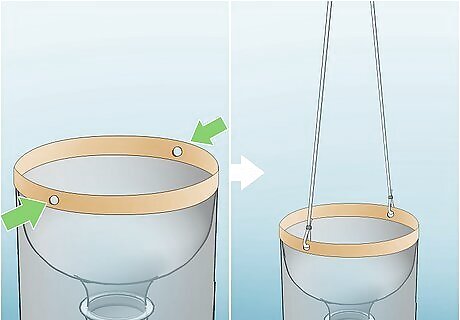
Poke 2 holes opposite each other and tie a string through them to hang the trap. You can use scissors, a knife, or another sharp object, or try a single-hole punch. String, yarn, or an old shoelace are great materials for a handle. If you’re making multiple traps, you can also use these holes to string them together.
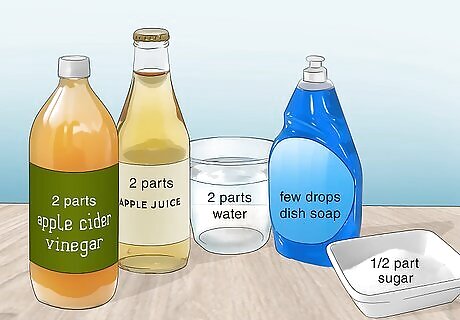
Mix apple cider vinegar, apple juice, water, sugar, and dish soap to make the bait. Combine the ingredients in a large bowl, using roughly 2 parts of all the liquid ingredients, ½ part sugar, and a few drops of dish soap. Stir the mixture together slowly to avoid creating bubbles in the dish soap. The dish soap breaks the surface tension of the water, meaning the wasp will drown more easily. It will also dissolve their outer coating, killing them quickly.
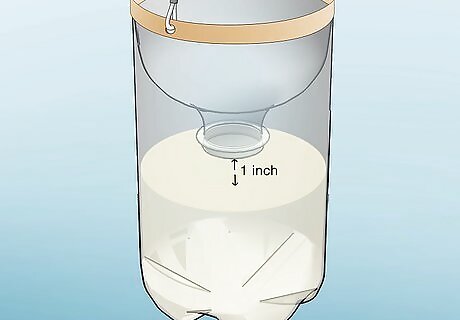
Pour the mixture into your trap. Leave at least 1 inch (2.5 cm) between the top of the mixture and the bottom of the funnel so the wasps cannot latch onto the funnel to escape.

Hang your trap on a tree branch or fence post away from busy areas. An elevated trap will attract more wasps than one set on the ground. Experiment with sturdy tree limbs, plant hooks, fences, and other strong fixtures to see which location is most effective. Choose a spot that is at least 10 yards (9.1 m) away from high-traffic areas like patios, play equipment, or garage doors. Create several traps and hang them around your yard to cover a wider area.
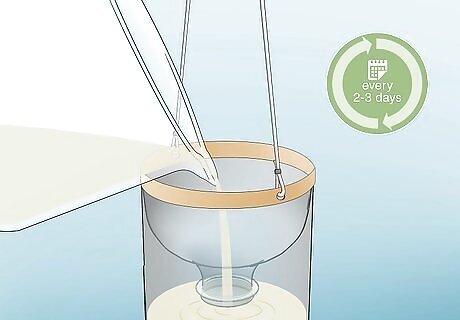
Empty, clean, and refill the trap every 2-3 days. You may need to do this more frequently in hot weather since the heat will cause water to evaporate out of the trap. Check the trap after a heavy rain in case the trap flooded and needs to be drained and refilled. Check to make sure the trapped wasps are dead before disposing of them. An escapee will fly back to the nest and warn the colony of the trap. Bury the dead wasps or seal them in a bag to throw in the garbage. Avoid crushing them, since their bodies release a scent that will rile up any other wasps in the area.
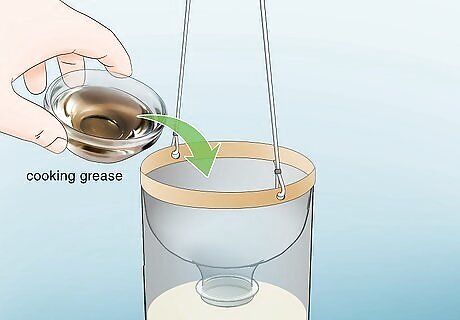
Add extra bait if the trap is not enticing enough. If you notice very few wasps wandering into your trap, try adding seasonal baits to the mixture. Add cooking grease in the spring when wasps are craving protein-rich food. In the summer, try jam or extra sugar. Do not use honey. This will attract bees, who are nonaggressive and important pollinators. If you find yourself catching insects other than wasps, experiment with other bait including sweet-smelling laundry detergent, fruit juice, soda, or beer.
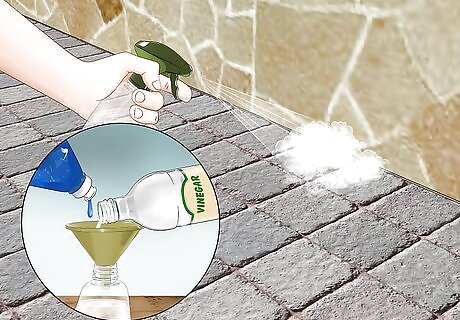
Use the vinegar and dish soap mixture in a spray bottle to kill individual wasps. Carry a plastic spray bottle of the mixture with you while working in the garden or enjoying time outdoors to deal with pesky wasps on the spot. Spray the wasp until it is saturated and no longer moving. You can also try placing a full trap next to you while you’re working outdoors to prevent wasps from harassing you.













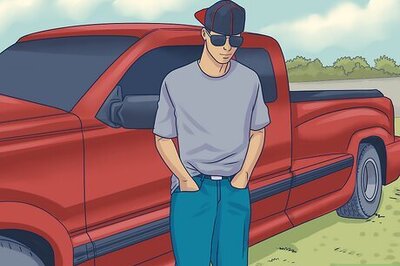

Comments
0 comment